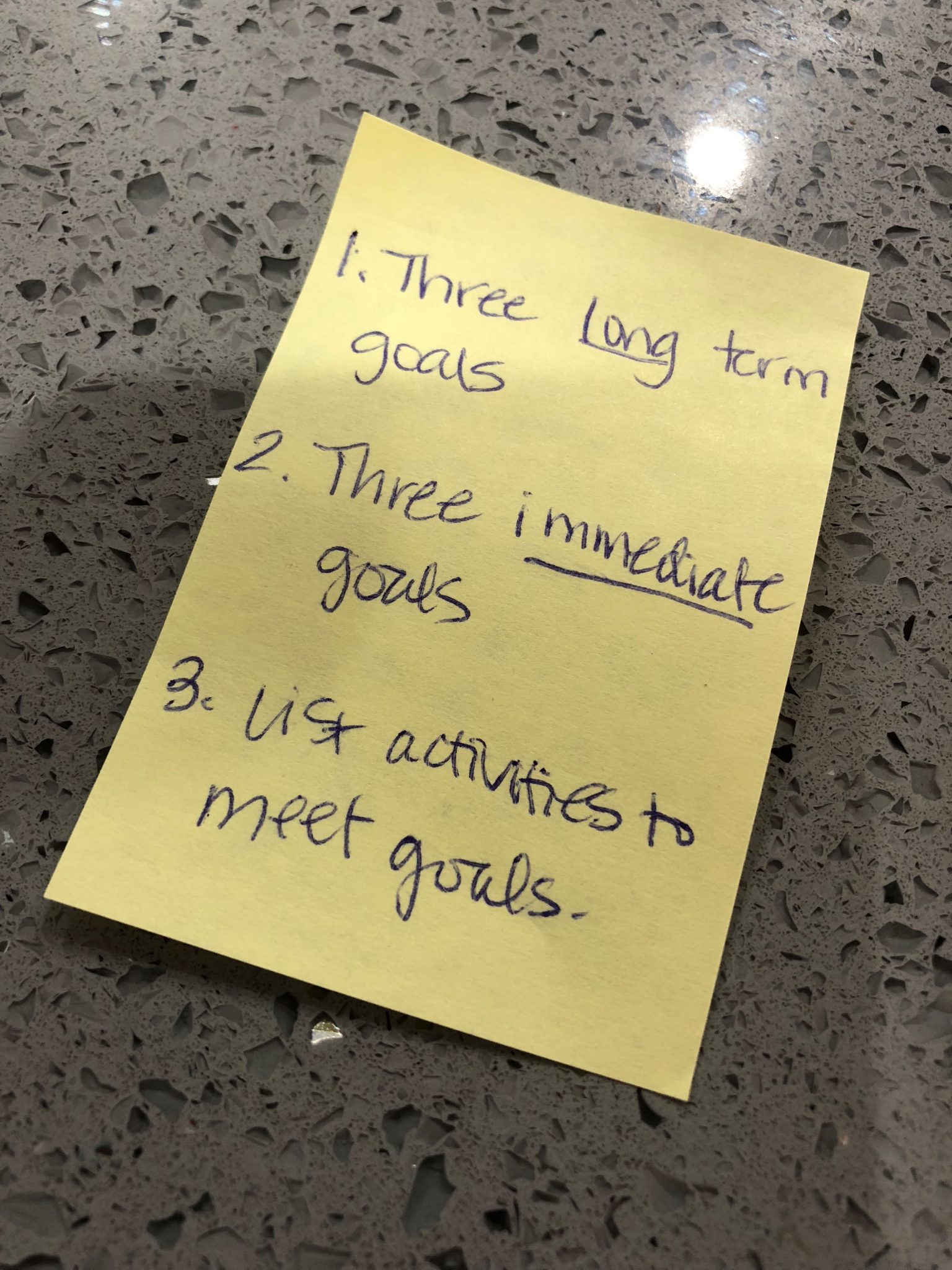“But I thought you meant…”
Have you heard someone say that lately? Or, have you said it to someone you work or live with? Talking about your goals - out loud, and with the right people - is a sure way to save time, relieve stress and be more productive. You might even save some money as well!
Look around your office, review your calendar and double-check your to-do list sometime today. Make TWO lists in your notebook:
- one list of projects you’re managing, and
- one list of ideas you’re still thinking about (but haven’t committed to doing or decided not to do…yet).
WHAT TO WRITE ON EACH LIST
The list of projects includes events you’re participating in, client or vendor agreements you’re managing and matters you’re involved in. For many people, this list will be 25-100 items long. There’s no “right number” of projects you have going on; the most important thing, though, is that you know what they are.
The list of “things to think about” includes the back-burner projects or “might-get-to-ideas” that you are not working on in the next 12 months. Again, there isn’t a right number here; but, many of the clients I coach have made lists of more than 200 items! The number isn’t important, but I will tell you what is CRITICAL if you’re going to succeed at work and at home:
CHECKING IN WITH YOUR TEAM
You’ve got to be on the exact same page with your colleagues at work about what you are and are NOT working on. And it may be even more important do this at home. For example, what house project are you NOT going to take on? What vacation are you NOT going to plan? What youth program are you NOT going to send the kids to? Once you know what you’re NOT going to do -for now, not forever - you get to double down with your resources (time, energy, focus and money) on what you said yes to.
You also create clarity.
When you are - or someone you work with is - confused about which priority is a higher priority, and which “less-important” task can wait until later, the entire workflow system is compromised. Whether you are a leader in a large organization or manager in a small one, you must have these kinds of goal-setting conversations regularly.
DON’T DROP THE BALL
Most likely you’ve experienced the inefficiency and ineffectiveness of having to work overtime, or (what could be worse!) you had to ask for an extension at the last minute. You pay a significant price when you over commit or under deliver. Whether you mean to or not, when something doesn’t get done, trust is damaged. Then you spend extra time, money and effort to rebuild the relationship.
At work, this can jeopardize relationships with team members or clients. At home, you may have to retrace your steps, rebuild a relationship and reestablish trust with those you live with and love.
TRY THIS
Right now, ask yourself this question (and, considering brainstorming your answers in your notebook):
“Where is there ambiguity and unclear direction?”
If you ask yourself this question and really listen to the answer, SOMEthing valuable will show up.
MANAGING PROJECTS
Years ago, I hired a small company to build a new website for our new company. We were a few weeks into a 6-month project, and I had this sense that something was off. That weekend, I talked with my partner, and on Monday morning I sent an email with the subject line:
“Let’s talk about both kinds of goals”
The 30-minute conversation that week went smoothly. We made a list of the projects to manage, and ANOTHER list of possible things to discuss at later phases of the project (6 and 12 months after publishing the site).
Looking back, I figure that meeting saved me dozens of hours, and probably a few thousand dollars of “scope-creep” and “project changes” over the next few months. By framing the meeting in a way that would help us all see what needed to be done, we experienced less pressure and more productivity than before. Oh, and the best part of it? We wound up finishing in just five months!
That wasn’t the first time I’d had this kind of conversation. And, I often meet with my clients, my vendors and even my wife to talk about the types of goals we manage. In fact, I’d been practicing talking about types of goals for almost two decades.
BUILD YOUR LIST
If you’d like to explore the differences - both in life and at work - journal your responses to questions like: “What am I working on? What am I working toward? What am I working for?” These questions help identify which goals you’re managing and ideas you’re considering.
A project is something you’ve committed to; it’s something you’ll submit, finalize, sign-off or move on from something. Projects have deadlines. It might be a report you’ll present at the end of the month, or it could be a new line of business you’ll launch next year. Either way, at some point you’ll be done with it, and get to check it off your list!
Your second list is a full of ideas that you’re managing, which is equally important to the project list. Your innovations come from giving yourself the freedom to think without committing to every through that passes through your mind! Separating these ideas from actual projects keeps you focused and clear.
START TODAY
Go! Open your journal and identify the two kinds of goals you can set starting today. And, remember to ask for help along the way!
